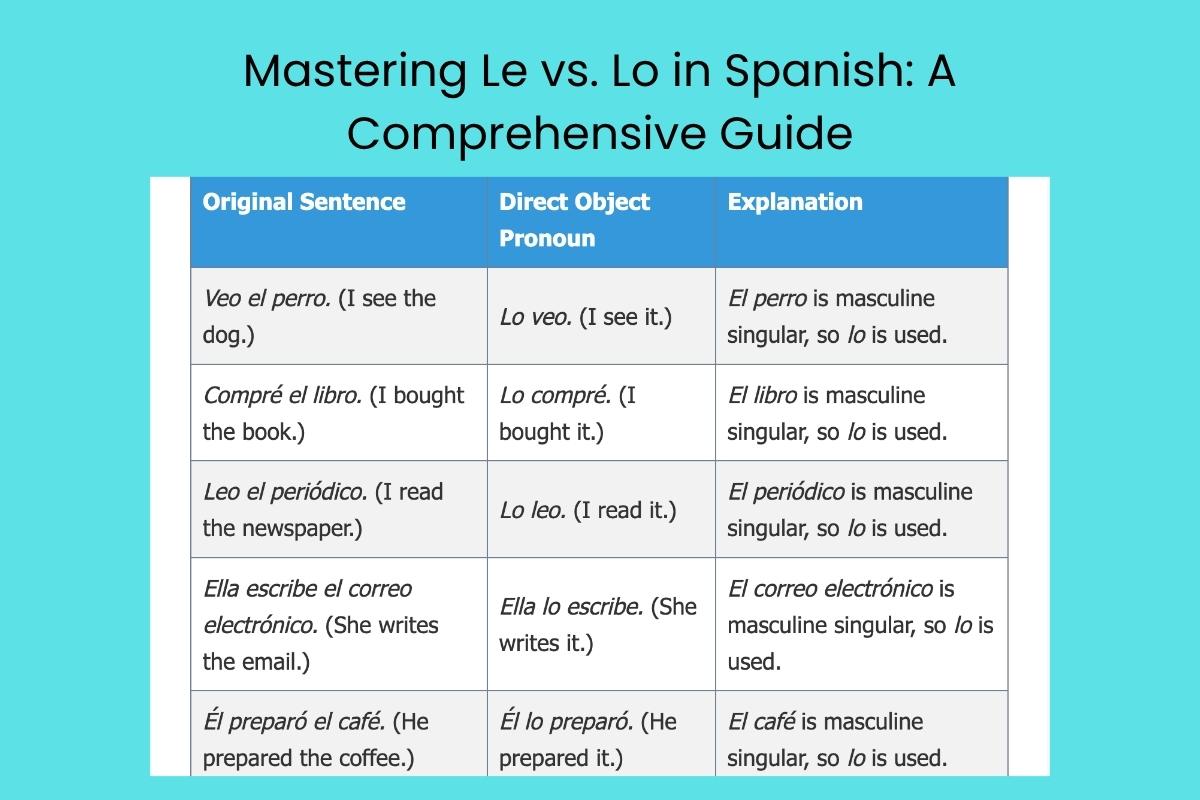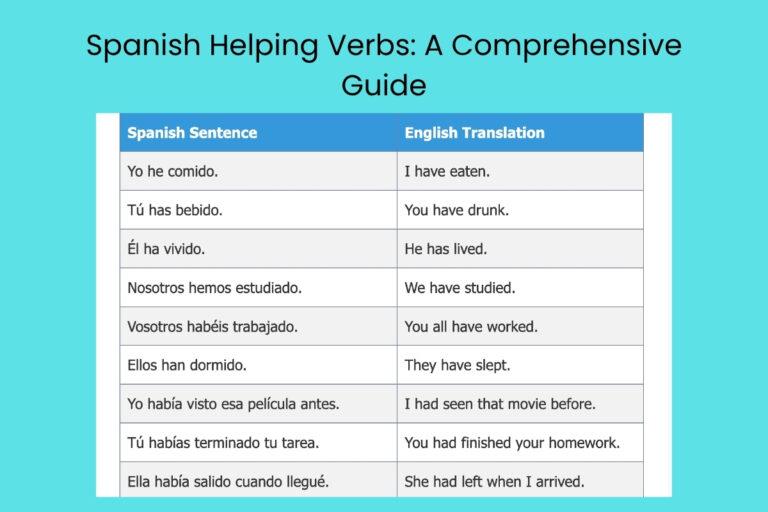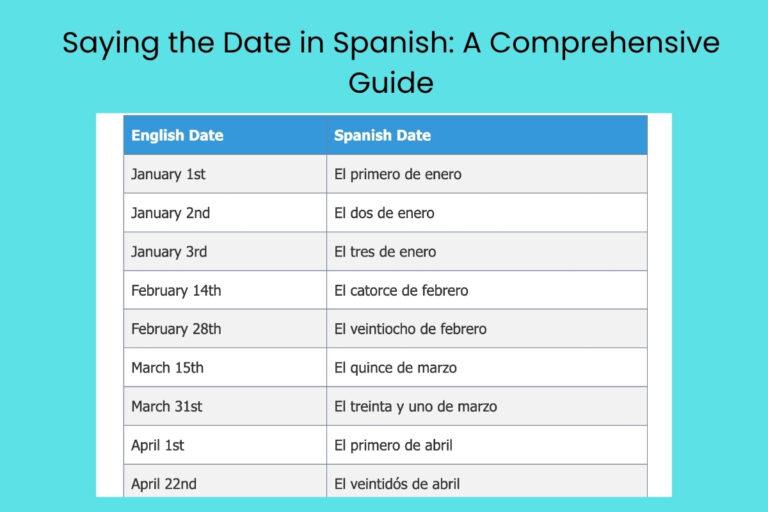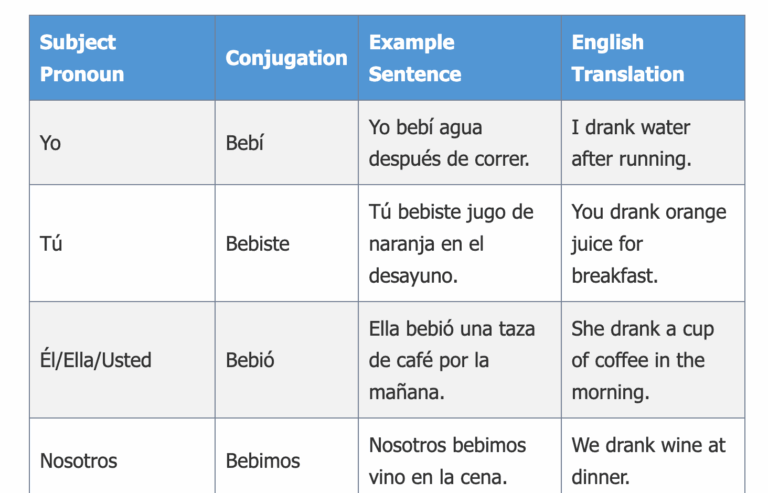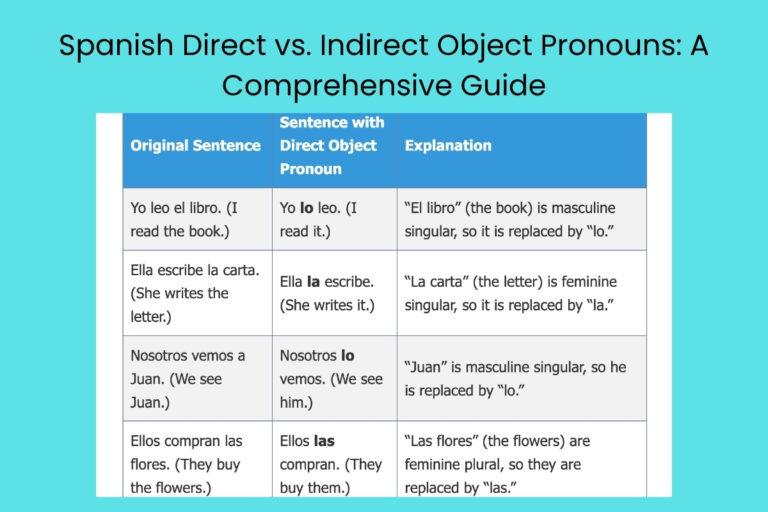Mastering Le vs. Lo in Spanish: A Comprehensive Guide
Understanding the difference between le and lo in Spanish is crucial for achieving fluency and accuracy. These pronouns, both direct and indirect object pronouns, can be tricky for learners because their usage isn’t always a direct translation from English. This guide provides a comprehensive exploration of le and lo, covering their definitions, structural roles, usage rules, common mistakes, and advanced nuances. Whether you’re a beginner or an advanced learner, this article will help you confidently navigate the complexities of these essential Spanish pronouns.
Table of Contents
- Introduction
- Definitions of Le and Lo
- Structural Breakdown
- Types and Categories
- Examples
- Usage Rules
- Common Mistakes
- Practice Exercises
- Advanced Topics
- FAQ
- Conclusion
Definitions of Le and Lo
In Spanish grammar, le and lo are pronouns that replace nouns to avoid repetition and make sentences more concise. They function as either direct or indirect object pronouns, depending on the verb and the context of the sentence. Understanding their specific roles is essential for accurate communication.
Le
The pronoun le primarily functions as an indirect object pronoun. It refers to the person or thing to whom or for whom an action is done. It generally corresponds to “to him,” “to her,” “to it,” or “to you (formal)” in English when used as an indirect object. However, in some dialects of Spanish, particularly in Spain, le is also used as a direct object pronoun referring to a male person (a phenomenon known as leísmo, discussed in more detail later). The meaning of le is highly dependent on the context.
Lo
The pronoun lo typically functions as a direct object pronoun. It refers to a masculine noun or pronoun that receives the action of the verb directly. It can be translated as “him,” “it,” or “you (formal),” depending on the context. Lo can also function as a neuter pronoun, referring to an abstract idea or a situation. Direct object pronouns directly receive the action of the verb.
Structural Breakdown
The placement of le and lo in a sentence follows specific rules in Spanish grammar. Understanding these rules is essential for constructing grammatically correct sentences. Typically, these pronouns precede the conjugated verb, but there are exceptions, especially with infinitives, gerunds, and affirmative commands.
Placement of Le and Lo
Generally, le and lo are placed before the conjugated verb. However, when used with infinitives, gerunds, or affirmative commands, they are attached after the verb, forming a single word. When pronouns are attached to the end of a verb, an accent mark might be necessary to maintain the original stress of the verb.
Examples:
- Before the verb: Yo lo veo. (I see him/it.)
- Attached to an infinitive: Quiero verlo. (I want to see him/it.)
- Attached to a gerund: Estoy viéndolo. (I am seeing him/it.)
- Attached to a command: ¡Miralo! (Look at him/it!)
Pronoun Combinations
When both a direct and an indirect object pronoun are used in the same sentence, the indirect object pronoun comes before the direct object pronoun. However, when the indirect object pronoun is le or les, it changes to se to avoid the awkward sound of “le lo” or “les lo.”
Example:
- Yo le doy el libro. (I give him/her the book.)
- With both pronouns: Yo se lo doy. (I give it to him/her.) (Le lo becomes se lo)
Types and Categories
Le and lo fall into the categories of direct and indirect object pronouns. However, regional variations and grammatical phenomena like leísmo further complicate their usage.
Direct Object Pronouns
Direct object pronouns replace the noun that directly receives the action of the verb. The direct object answers the question “what?” or “whom?” after the verb. In standard Spanish, lo and la are the direct object pronouns. Lo is used for masculine singular nouns, and la is used for feminine singular nouns. Los and las are the plural forms.
Examples:
- Veo el coche. (I see the car.) -> Lo veo. (I see it.) (masculine singular)
- Veo la casa. (I see the house.) -> La veo. (I see it.) (feminine singular)
- Veo los coches. (I see the cars.) -> Los veo. (I see them.) (masculine plural)
- Veo las casas. (I see the houses.) -> Las veo. (I see them.) (feminine plural)
Indirect Object Pronouns
Indirect object pronouns replace the noun that indirectly receives the action of the verb. The indirect object answers the question “to whom?” or “for whom?” after the verb. The indirect object pronouns are le and les. Le is used for singular indirect objects, and les is used for plural indirect objects. These pronouns do not change based on the gender of the object they replace.
Examples:
- Doy el libro a Juan. (I give the book to Juan.) -> Le doy el libro. (I give the book to him.)
- Doy los libros a María y Ana. (I give the books to Maria and Ana.) -> Les doy los libros. (I give the books to them.)
Leísmo
Leísmo is the use of le as a direct object pronoun, typically referring to a male person. While considered incorrect by the Real Academia Española (Royal Spanish Academy) in most contexts, it is common in certain regions of Spain. This is a particularly sensitive area of Spanish grammar, and its acceptability varies greatly depending on the region and the speaker’s level of formality.
Example:
- Incorrect (according to RAE): Le veo (referring to a male person) instead of Lo veo.
- Correct (according to RAE): Lo veo (I see him).
Laísmo
Laísmo is the use of la as an indirect object pronoun, typically referring to a female person. This is generally considered incorrect in standard Spanish.
Example:
- Incorrect: La di el libro. (I gave her the book.)
- Correct: Le di el libro. (I gave her the book.)
Loísmo
Loísmo is the use of lo as an indirect object pronoun. This is generally considered incorrect in standard Spanish.
Example:
- Incorrect: Lo di el libro. (I gave him the book.)
- Correct: Le di el libro. (I gave him the book.)
Examples
Understanding the use of le and lo is best achieved through numerous examples. The following tables provide a comprehensive overview of their usage in various contexts.
Direct Object Examples
The table below illustrates the use of lo, la, los, and las as direct object pronouns.
| Original Sentence | Sentence with Direct Object Pronoun | Explanation |
|---|---|---|
| Veo el perro. (I see the dog.) | Lo veo. (I see it.) | El perro is masculine singular, so lo is used. |
| Compré el libro. (I bought the book.) | Lo compré. (I bought it.) | El libro is masculine singular, so lo is used. |
| Leo el periódico. (I read the newspaper.) | Lo leo. (I read it.) | El periódico is masculine singular, so lo is used. |
| Ella escribe el correo electrónico. (She writes the email.) | Ella lo escribe. (She writes it.) | El correo electrónico is masculine singular, so lo is used. |
| Él preparó el café. (He prepared the coffee.) | Él lo preparó. (He prepared it.) | El café is masculine singular, so lo is used. |
| Veo la casa. (I see the house.) | La veo. (I see it.) | La casa is feminine singular, so la is used. |
| Compré la camisa. (I bought the shirt.) | La compré. (I bought it.) | La camisa is feminine singular, so la is used. |
| Leo la revista. (I read the magazine.) | La leo. (I read it.) | La revista is feminine singular, so la is used. |
| Ella escribe la carta. (She writes the letter.) | Ella la escribe. (She writes it.) | La carta is feminine singular, so la is used. |
| Él preparó la cena. (He prepared the dinner.) | Él la preparó. (He prepared it.) | La cena is feminine singular, so la is used. |
| Veo los perros. (I see the dogs.) | Los veo. (I see them.) | Los perros is masculine plural, so los is used. |
| Compré los libros. (I bought the books.) | Los compré. (I bought them.) | Los libros is masculine plural, so los is used. |
| Leo los periódicos. (I read the newspapers.) | Los leo. (I read them.) | Los periódicos is masculine plural, so los is used. |
| Ella escribe los correos electrónicos. (She writes the emails.) | Ella los escribe. (She writes them.) | Los correos electrónicos is masculine plural, so los is used. |
| Él preparó los cafés. (He prepared the coffees.) | Él los preparó. (He prepared them.) | Los cafés is masculine plural, so los is used. |
| Veo las casas. (I see the houses.) | Las veo. (I see them.) | Las casas is feminine plural, so las is used. |
| Compré las camisas. (I bought the shirts.) | Las compré. (I bought them.) | Las camisas is feminine plural, so las is used. |
| Leo las revistas. (I read the magazines.) | Las leo. (I read them.) | Las revistas is feminine plural, so las is used. |
| Ella escribe las cartas. (She writes the letters.) | Ella las escribe. (She writes them.) | Las cartas is feminine plural, so las is used. |
| Él preparó las cenas. (He prepared the dinners.) | Él las preparó. (He prepared them.) | Las cenas is feminine plural, so las is used. |
| Necesito el libro. (I need the book.) | Lo necesito. (I need it.) | El libro is masculine singular, so lo is used. |
| Quiero la manzana. (I want the apple.) | La quiero. (I want it.) | La manzana is feminine singular, so la is used. |
| Escucho la canción. (I listen to the song.) | La escucho. (I listen to it.) | La canción is feminine singular, so la is used. |
| Entiendo el problema. (I understand the problem.) | Lo entiendo. (I understand it.) | El problema is masculine singular, so lo is used. |
| Visito el museo. (I visit the museum.) | Lo visito. (I visit it.) | El museo is masculine singular, so lo is used. |
| Llevo las llaves. (I carry the keys.) | Las llevo. (I carry them.) | Las llaves is feminine plural, so las is used. |
Indirect Object Examples
The table below illustrates the use of le and les as indirect object pronouns.
| Original Sentence | Sentence with Indirect Object Pronoun | Explanation |
|---|---|---|
| Doy el regalo a Juan. (I give the gift to Juan.) | Le doy el regalo. (I give him the gift.) | A Juan is singular, so le is used. |
| Escribo una carta a María. (I write a letter to Maria.) | Le escribo una carta. (I write her a letter.) | A María is singular, so le is used. |
| Compro flores a mi madre. (I buy flowers for my mother.) | Le compro flores. (I buy her flowers.) | A mi madre is singular, so le is used. |
| Doy consejos a mi hermano. (I give advice to my brother.) | Le doy consejos. (I give him advice.) | A mi hermano is singular, so le is used. |
| Preparo la cena a mi padre. (I prepare dinner for my father.) | Le preparo la cena. (I prepare dinner for him.) | A mi padre is singular, so le is used. |
| Doy los regalos a Juan y María. (I give the gifts to Juan and Maria.) | Les doy los regalos. (I give them the gifts.) | A Juan y María is plural, so les is used. |
| Escribo cartas a mis amigos. (I write letters to my friends.) | Les escribo cartas. (I write them letters.) | A mis amigos is plural, so les is used. |
| Compro flores a mis padres. (I buy flowers for my parents.) | Les compro flores. (I buy them flowers.) | A mis padres is plural, so les is used. |
| Doy consejos a mis hermanos. (I give advice to my brothers.) | Les doy consejos. (I give them advice.) | A mis hermanos is plural, so les is used. |
| Preparo la cena a mis abuelos. (I prepare dinner for my grandparents.) | Les preparo la cena. (I prepare them dinner.) | A mis abuelos is plural, so les is used. |
| Explico la lección al estudiante. (I explain the lesson to the student.) | Le explico la lección. (I explain the lesson to him/her.) | Al estudiante is singular, so le is used. |
| Muestro las fotos a la familia. (I show the photos to the family.) | Le muestro las fotos. (I show them the photos.) | A la familia is singular, so le is used. |
| Sirvo la comida al cliente. (I serve the food to the client.) | Le sirvo la comida. (I serve him/her the food.) | Al cliente is singular, so le is used. |
| Canto una canción al niño. (I sing a song to the child.) | Le canto una canción. (I sing him/her a song.) | Al niño is singular, so le is used. |
| Doy agua a la planta. (I give water to the plant.) | Le doy agua. (I give it water.) | A la planta is singular, so le is used. |
| Explico la lección a los estudiantes. (I explain the lesson to the students.) | Les explico la lección. (I explain the lesson to them.) | A los estudiantes is plural, so les is used. |
| Muestro las fotos a los amigos. (I show the photos to the friends.) | Les muestro las fotos. (I show them the photos.) | A los amigos is plural, so les is used. |
| Sirvo la comida a los clientes. (I serve the food to the clients.) | Les sirvo la comida. (I serve them the food.) | A los clientes is plural, so les is used. |
| Canto una canción a los niños. (I sing a song to the children.) | Les canto una canción. (I sing them a song.) | A los niños is plural, so les is used. |
| Doy agua a las plantas. (I give water to the plants.) | Les doy agua. (I give them water.) | A las plantas is plural, so les is used. |
Leísmo Examples
The table below illustrates examples of leísmo, the use of le as a direct object pronoun referring to a male person. Note that these examples are considered non-standard by the RAE but are common in some regions.
| Sentence with Leísmo | Standard Spanish Equivalent | Explanation |
|---|---|---|
| Le veo (a Juan). (I see him (Juan).) | Lo veo (a Juan). (I see him (Juan).) | Le is used as a direct object pronoun for a male person (Juan). |
| Le ayudé (a Pedro). (I helped him (Pedro).) | Lo ayudé (a Pedro). (I helped him (Pedro).) | Le is used as a direct object pronoun for a male person (Pedro). |
| Le llamé (a Carlos). (I called him (Carlos).) | Lo llamé (a Carlos). (I called him (Carlos).) | Le is used as a direct object pronoun for a male person (Carlos). |
| Le respeto (al profesor). (I respect him (the professor).) | Lo respeto (al profesor). (I respect him (the professor).) | Le is used as a direct object pronoun for a male person (the professor). |
| Le conocí (a mi vecino). (I met him (my neighbor).) | Lo conocí (a mi vecino). (I met him (my neighbor).) | Le is used as a direct object pronoun for a male person (my neighbor). |
Usage Rules
Several rules govern the proper use of le and lo, ensuring grammatical accuracy and clarity. These rules involve gender and number agreement, verb types, and the use of reflexive pronouns.
Gender and Number Agreement
Direct object pronouns (lo, la, los, las) must agree in gender and number with the noun they replace. Indirect object pronouns (le, les) do not change based on gender, but they must agree in number.
Examples:
- Lo veo. (I see him/it.) (masculine singular)
- La veo. (I see her/it.) (feminine singular)
- Los veo. (I see them.) (masculine plural)
- Las veo. (I see them.) (feminine plural)
- Le doy el libro. (I give him/her the book.) (singular)
- Les doy el libro. (I give them the book.) (plural)
Verbs Commonly Used with Indirect Objects
Certain verbs commonly take indirect objects, such as dar (to give), decir (to say), escribir (to write), mostrar (to show), and prestar (to lend). When using these verbs, it’s important to identify the recipient of the action and use the appropriate indirect object pronoun.
Examples:
- Le di el libro a Juan. (I gave the book to Juan.)
- Les dije la verdad a mis padres. (I told the truth to my parents.)
- Le escribí una carta a mi amiga. (I wrote a letter to my friend.)
- Les mostré las fotos a mis amigos. (I showed the photos to my friends.)
- Le presté mi coche a mi hermano. (I lent my car to my brother.)
Reflexive Pronouns
Reflexive pronouns (me, te, se, nos, os, se) are used when the subject and the object of the verb are the same. They indicate that the action of the verb is performed by the subject upon itself. Note that se can sometimes be confused with le/les, but their functions are distinct.
Examples:
- Yo me lavo. (I wash myself.)
- Él se lava. (He washes himself.)
- Le lavo el coche. (I wash his car.) (indirect object)
Common Mistakes
Learners often make mistakes with le and lo due to interference from English or confusion about their roles. Recognizing these common errors is the first step toward correcting them.
Mistakes with Direct Objects
One common mistake is using le as a direct object pronoun when it should be lo or la. Another is incorrect gender or number agreement.
Examples:
- Incorrect: Le veo (a la casa). (I see it (the house).)
- Correct: La veo (a la casa). (I see it (the house).)
- Incorrect: Lo veo (a la chica). (I see her (the girl).)
- Correct: La veo (a la chica). (I see her (the girl).)
Mistakes with Indirect Objects
Using lo or la as an indirect object pronoun is a frequent error. Additionally, learners may incorrectly use direct object pronouns instead of indirect object pronouns.
Examples:
- Incorrect: Lo doy el libro a Juan. (I give him the book to Juan.)
- Correct: Le doy el libro a Juan. (I give him the book to Juan.)
- Incorrect: La escribo una carta a María. (I write her a letter to Maria.)
- Correct: Le escribo una carta a María. (I write her a letter to Maria.)
Practice Exercises
These exercises will help you solidify your understanding of le and lo. They cover identifying direct and indirect objects, choosing the correct pronoun, and correcting sentences with errors.
Exercise 1: Identifying Direct and Indirect Objects
Identify the direct object (DO) and indirect object (IO) in each sentence.
| Sentence | Direct Object | Indirect Object |
|---|---|---|
| Doy el libro a María. | ||
| Veo el coche. | ||
| Escribo una carta a mi madre. | ||
| Compro flores a mi amiga. | ||
| Preparo la cena a mi familia. | ||
| Explico la lección a los estudiantes. | ||
| Muestro las fotos a mis amigos. | ||
| Sirvo la comida al cliente. | ||
| Canto una canción al niño. | ||
| Doy agua a la planta. |
Answer Key:
| Sentence | Direct Object | Indirect Object |
|---|---|---|
| Doy el libro a María. | el libro | a María |
| Veo el coche. | el coche | |
| Escribo una carta a mi madre. | una carta | a mi madre |
| Compro flores a mi amiga. | flores | a mi amiga |
| Preparo la cena a mi familia. | la cena | a mi familia |
| Explico la lección a los estudiantes. | la lección | a los estudiantes |
| Muestro las fotos a mis amigos. | las fotos | a mis amigos |
| Sirvo la comida al cliente. | la comida | al cliente |
| Canto una canción al niño. | una canción | al niño |
| Doy agua a la planta. | agua | a la planta |
Exercise 2: Choosing Le or Lo
Choose the correct pronoun (le, lo, la, los, las) to complete each sentence.
| Sentence | Correct Pronoun |
|---|---|
| Yo ____ veo. (el coche) | |
| Yo ____ doy el libro. (a Juan) | |
| Yo ____ escribo una carta. (a María) | |
| Yo ____ compro. (las flores) | |
| Yo ____ preparo la cena. (a mi familia) | |
| Yo ____ explico la lección. (a los estudiantes) | |
|
Yo ____ muestro las fotos. (a mis amigos) |
|
| Yo ____ sirvo la comida. (al cliente) | |
| Yo ____ canto una canción. (al niño) | |
| Yo ____ doy agua. (a la planta) | |
| Yo ____ leo. (el periódico) |
Answer Key:
| Sentence | Correct Pronoun |
|---|---|
| Yo lo veo. (el coche) | lo |
| Yo le doy el libro. (a Juan) | le |
| Yo le escribo una carta. (a María) | le |
| Yo las compro. (las flores) | las |
| Yo le preparo la cena. (a mi familia) | le |
| Yo les explico la lección. (a los estudiantes) | les |
| Yo les muestro las fotos. (a mis amigos) | les |
| Yo le sirvo la comida. (al cliente) | le |
| Yo le canto una canción. (al niño) | le |
| Yo le doy agua. (a la planta) | le |
| Yo lo leo. (el periódico) | lo |
Exercise 3: Correcting Sentences with Erroneous Pronoun Usage
Correct the sentences with erroneous pronoun usage.
| Incorrect Sentence | Corrected Sentence |
|---|---|
| Le veo a la casa. | |
| Lo doy el libro a María. | |
| La escribo una carta a Juan. | |
| Le compro a las flores. | |
| Les veo a los chicos. |
Answer Key:
| Incorrect Sentence | Corrected Sentence |
|---|---|
| Le veo a la casa. | La veo a la casa. |
| Lo doy el libro a María. | Le doy el libro a María. |
| La escribo una carta a Juan. | Le escribo una carta a Juan. |
| Le compro a las flores. | Las compro. |
| Les veo a los chicos. | Los veo. |
Advanced Topics
For advanced learners, understanding the nuances of se impersonal constructions and clitic doubling can further refine their grasp of Spanish grammar.
Se Impersonal Constructions
The impersonal se is used to make general statements where the subject is not specified. In these constructions, the verb is typically in the third-person singular. This is different from the reflexive se or the se that replaces le/les when combined with lo/la/los/las.
Examples:
- Se habla español aquí. (Spanish is spoken here.)
- Se vive bien en España. (One lives well in Spain.)
Clitic Doubling
Clitic doubling involves using both a pronoun and the noun it refers to in the same sentence. This is common with indirect objects and can be used for emphasis or clarification.
It’s more frequently used with indirect objects than direct objects.
Examples:
- A Juan le di el libro. (To Juan, I gave him the book.)
- A mi madre le compré flores. (To my mother, I bought her flowers.)
FAQ
When should I use ‘le’ instead of ‘lo’ for a male person (leísmo)?
While ‘leísmo’ is common in some regions of Spain, standard Spanish dictates that ‘lo’ should be used as the direct object pronoun for male persons. Unless you are in a region where ‘leísmo’ is prevalent and accepted, it’s best to adhere to the standard rule.
How do I know if a verb takes a direct or indirect object?
Ask yourself “what?” or “whom?” after the verb to identify the direct object. Ask “to whom?” or “for whom?” to identify the indirect object.
For example, in “I give the book to John,” “book” answers “what do I give?” (direct object), and “John” answers “to whom do I give it?” (indirect object).
What happens when I have both a direct and indirect object pronoun in the same sentence?
The indirect object pronoun comes before the direct object pronoun. If the indirect object pronoun is ‘le’ or ‘les’, it changes to ‘se’ to avoid the sequence “le lo” or “les lo”.
Is it ever correct to use ‘la’ as an indirect object pronoun?
No, using ‘la’ as an indirect object pronoun (‘laísmo’) is generally considered incorrect in standard Spanish. The correct indirect object pronoun for a female person is ‘le’.
Conclusion
Mastering the use of le and lo is a significant step toward fluency in Spanish. By understanding their roles as direct and indirect object pronouns, following the rules of gender and number agreement, and avoiding common mistakes, you can communicate more accurately and confidently. Remember to practice regularly and pay attention to the nuances of usage in different contexts. With consistent effort, you’ll be able to navigate the complexities of these essential Spanish pronouns with ease.

